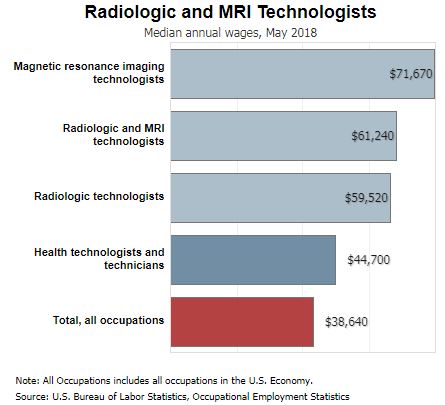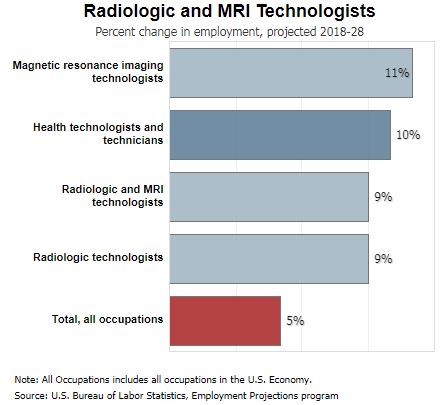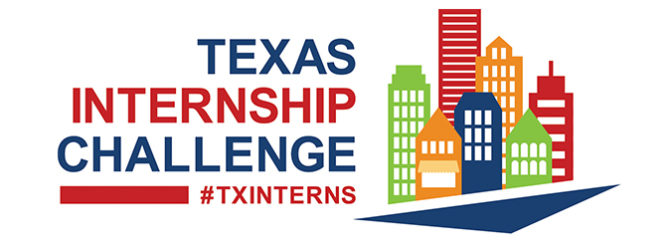X-Ray Technician
Phillip | October 29, 2019
807 Views
22 Likes
4.64
On 11 Ratings
Episodes
X-Ray Technician
X-ray technicians or Radiologic technologists perform diagnostic imaging examinations on patients. MRI technologists operate magnetic resonance imaging (MRI) scanners to create diagnostic images. Radiologic technologists and MRI technologists typically need an associate’s degree. Radiologic technologists must be licensed or certified in most states.
| Quick Facts: Radiologic and MRI Technologists | |
|---|---|
| 2018 Median Pay | $61,240 per year $29.44 per hour |
| Typical Entry-Level Education | Associate's degree |
| Work Experience in a Related Occupation | See How to Become One |
| On-the-job Training | None |
| Number of Jobs, 2018 | 250,000 |
| Job Outlook, 2018-28 | 9% (Faster than average) |
| Employment Change, 2018-28 | 23,300 |
Radiologic technologists, also known as radiographers, perform diagnostic imaging examinations, such as x rays, on patients. MRI technologists operate magnetic resonance imaging (MRI) scanners to create diagnostic images.
Duties
Radiologic and MRI technologists typically do the following:
- Adjust and maintain imaging equipment
- Precisely follow orders from physicians on what areas of the body to image
- Prepare patients for procedures, including taking a medical history and answering questions about the procedure
- Protect the patient by shielding exposed areas that do not need to be imaged
- Position the patient and the equipment in order to get the correct image
- Operate the computerized equipment to take the images
- Work with physicians to evaluate the images and to determine whether additional images need to be taken
- Keep detailed patient records
Healthcare professionals use many types of equipment to diagnose patients. Radiologic technologists specialize in x-ray and computed tomography (CT) imaging. Some radiologic technologists prepare a mixture for the patient to drink that allows soft tissue to be viewed on the images that the radiologist reviews.
Radiologic technologists might also specialize in mammography. Mammographers use low-dose x-ray systems to produce images of the breast. Technologists may be certified in multiple specialties.
MRI technologists specialize in magnetic resonance imaging scanners. They inject patients with contrast dyes so that the images will show up on the scanner. The scanners use magnetic fields in combination with the contrast agent to produce images that a physician can use to diagnose medical problems.
Healthcare professionals who specialize in other diagnostic equipment include nuclear medicine technologists and diagnostic medical sonographers, and cardiovascular technologists and technicians, including vascular technologists.
Radiologic technologists held about 210,500 jobs in 2018. The largest employers of radiologic technologists were as follows:
| Hospitals; state, local, and private | 60% |
| Offices of physicians | 20 |
| Medical and diagnostic laboratories | 7 |
| Outpatient care centers | 6 |
| Federal government, excluding postal service | 3 |
Magnetic resonance imaging technologists held about 39,400 jobs in 2018. The largest employers of magnetic resonance imaging technologists were as follows:
| Hospitals; state, local, and private | 59% |
| Medical and diagnostic laboratories | 20 |
| Offices of physicians | 13 |
| Outpatient care centers | 4 |
Radiologic and MRI technologists are often on their feet for long periods and may need to lift or turn patients who are disabled.
Injuries and Illnesses
Like other healthcare workers, radiologic and MRI technologists may be exposed to infectious diseases. In addition, because radiologic technologists work with imaging equipment that uses radiation, they must wear badges that measure radiation levels in the radiation area. Detailed records are kept on their cumulative lifetime dose. Although radiation hazards exist in this occupation, they are minimized by the use of protective lead aprons, gloves, and other shielding devices, and by badges that monitor exposure to radiation.
Work Schedules
Most radiologic and MRI technologists work full time. Because imaging is sometimes needed in emergency situations, some technologists work evenings, weekends, or overnight.
Radiologic technologists and MRI technologists typically need an associate’s degree. Many MRI technologists start out as radiologic technologists and specialize later in their career. Radiologic technologists must be licensed or certified in most states. Few states license MRI technologists. Employers typically require or prefer prospective technologists to be certified even if the state does not require it.
Education
An associate’s degree is the most common educational requirement for radiologic and MRI technologists. There also are postsecondary education programs that lead to graduate certificates or bachelor’s degrees. Education programs typically include both classroom study and clinical work. Coursework includes anatomy, pathology, patient care, radiation physics and protection, and image evaluation.
The Joint Review Committee on Education in Radiologic Technology (JRCERT) accredits programs in radiography and the American Registry of Magnetic Resonance Imaging Technologists (ARMRIT) accredits MRI programs. Completing an accredited program is required for licensure in some states.
High school students who are interested in radiologic or MRI technology should take courses that focus on math and science, such as anatomy, biology, chemistry, physiology, and physics.
Work Experience in a Related Occupation
MRI technologists typically have less than 5 years of work experience as radiologic technologists.
Licenses, Certifications, and Registrations
Radiologic technologists must be licensed or certified in most states. Few states license MRI technologists. Requirements vary by state.
To become licensed, technologists must usually graduate from an accredited program, and pass a certification exam from the state or obtain a certification from a certifying body. Certifications for radiologic technologists are available from the American Registry of Radiologic Technologists (ARRT). Certifications for MRI technologists are available from the ARRT and from the American Registry of Magnetic Resonance Imaging Technologists (ARMRIT). For specific licensure requirements for radiologic technologists and MRI technologists, contact the state’s health board.
Employers typically require or prefer prospective technologists to be certified even if the state does not require it.
Important Qualities
Detail oriented. Radiologic and MRI technologists must follow exact instructions to get the images needed for diagnoses.
Interpersonal skills. Radiologic and MRI technologists work closely with patients who may be in extreme pain or mentally stressed. They must put the patient at ease to get usable images.
Math skills. Radiologic and MRI technologists may need to calculate and mix the right doses of chemicals used in imaging procedures.
Physical stamina. Radiologic and MRI technologists often work on their feet for long periods during their shift and they must lift and move patients who need assistance.
Technical skills. Radiologic and MRI technologists must understand how to operate complex machinery.

The median annual wage for magnetic resonance imaging technologists was $71,670 in May 2018. The median wage is the wage at which half the workers in an occupation earned more than that amount and half earned less. The lowest 10 percent earned less than $50,220, and the highest 10 percent earned more than $99,180.
The median annual wage for radiologic technologists was $59,520 in May 2018. The lowest 10 percent earned less than $40,630, and the highest 10 percent earned more than $86,350.
In May 2018, the median annual wages for magnetic resonance imaging technologists in the top industries in which they worked were as follows:
| Outpatient care centers | $84,080 |
| Medical and diagnostic laboratories | 71,950 |
| Hospitals; state, local, and private | 71,270 |
| Offices of physicians | 70,530 |
In May 2018, the median annual wages for radiologic technologists in the top industries in which they worked were as follows:
| Federal government, excluding postal service | $65,230 |
| Outpatient care centers | 61,480 |
| Hospitals; state, local, and private | 60,700 |
| Medical and diagnostic laboratories | 60,200 |
| Offices of physicians | 53,990 |
Most radiologic and MRI technologists work full time. Because imaging is sometimes needed in emergency situations, some technologists work evenings, weekends, or overnight.

Employment of radiologic technologists is projected to grow 9 percent from 2018 to 2028, faster than the average for all occupations. Employment of MRI technologists is projected to grow 11 percent from 2018 to 2028, much faster than the average for all occupations.
As the baby-boom population grows older, there may be an increase in medical conditions, such as cancer and Alzheimer’s disease, which require imaging as a tool for making diagnoses. Radiologic and MRI technologists will be needed to take the images.
Job Prospects
Technologists who graduate from accredited programs and those with multiple certifications will have the best job prospects.
Bureau of Labor Statistics, U.S. Department of Labor, Occupational Outlook Handbook, Radiologic and MRI Technologists,
on the Internet at https://www.bls.gov/ooh/healthcare/radiologic-technologists.htm (visited October 07, 2019).
Salary information comes from the Bureau of Labor Statistics, Occupational Employment Statistics Program, a semi-annual survey that provides wage and employment statistics for the nation, each state, and sub-state regions.
Tagged as Amarillo College, Amarillo Texas, Career, Education, Frank Phillips College, Hometown Success, Internships, Jobs Ya'll, Occupation, Ochiltree General Hospital, Perryton, Radiologic Technologist, Radiology, Region 16, Texas, Texas Panhandle, Texas Workforce Commission, Workforce Solutions Panhandle, Wright Wranglers, X-Ray Technician.
Written by Phillip











